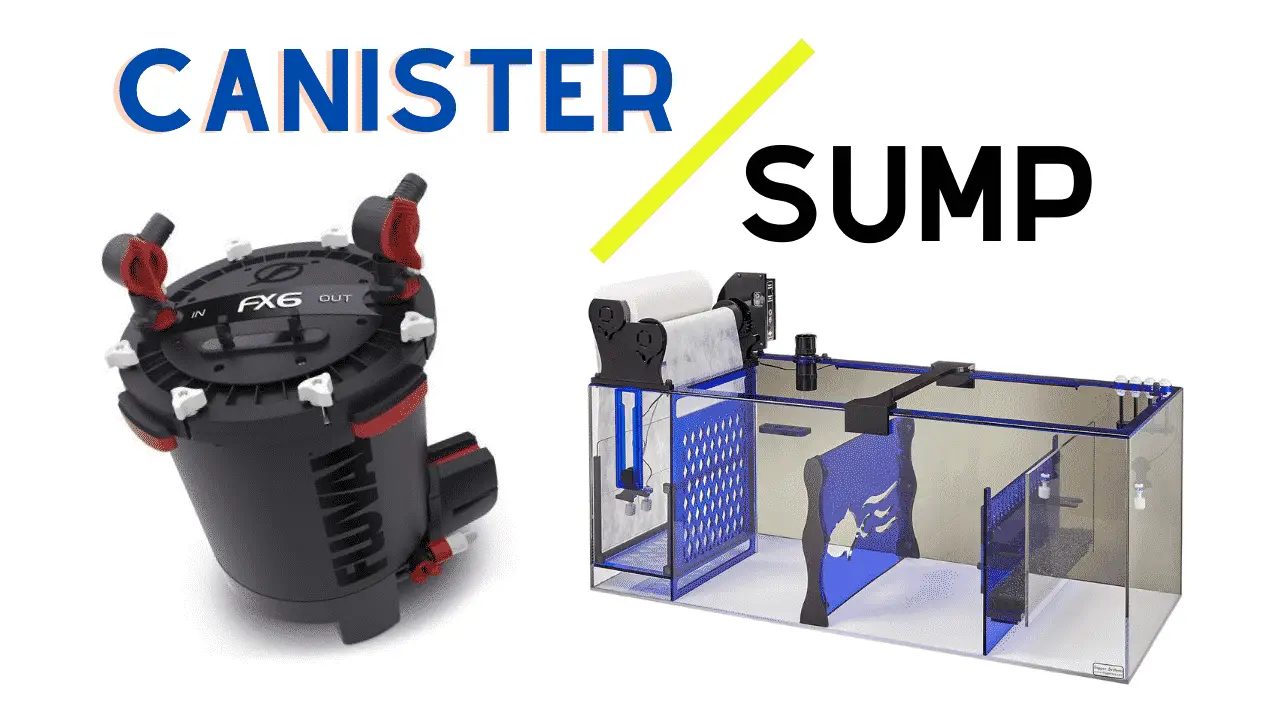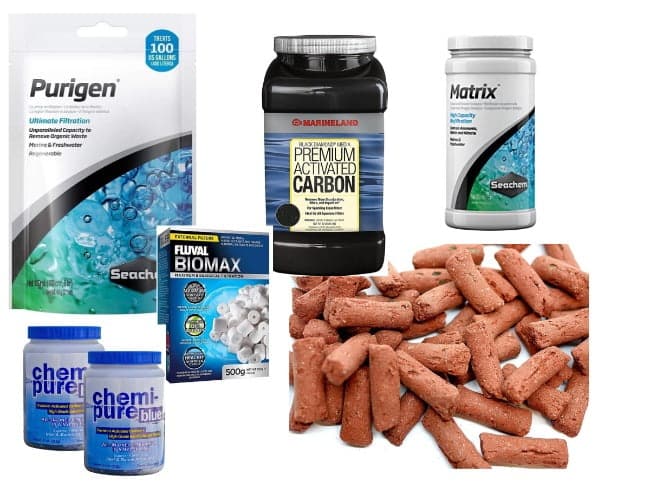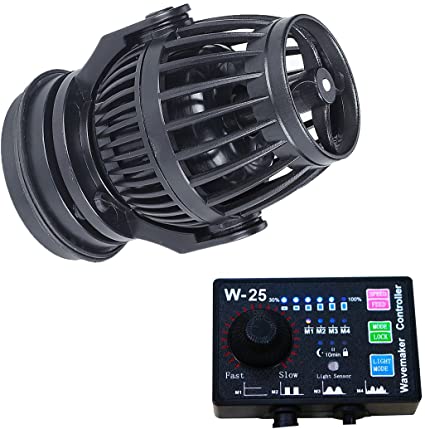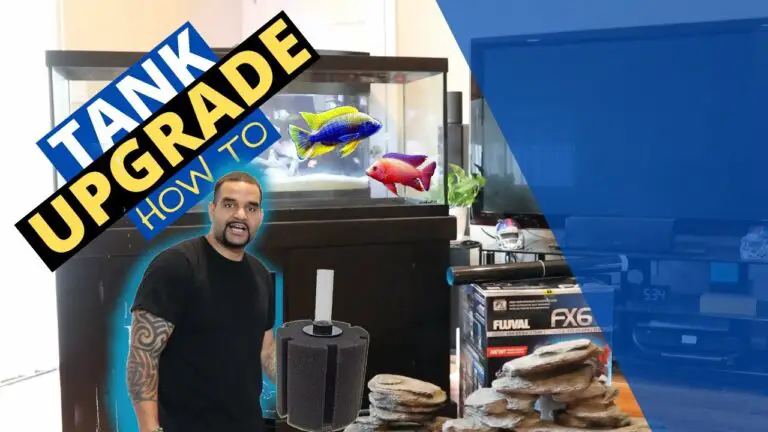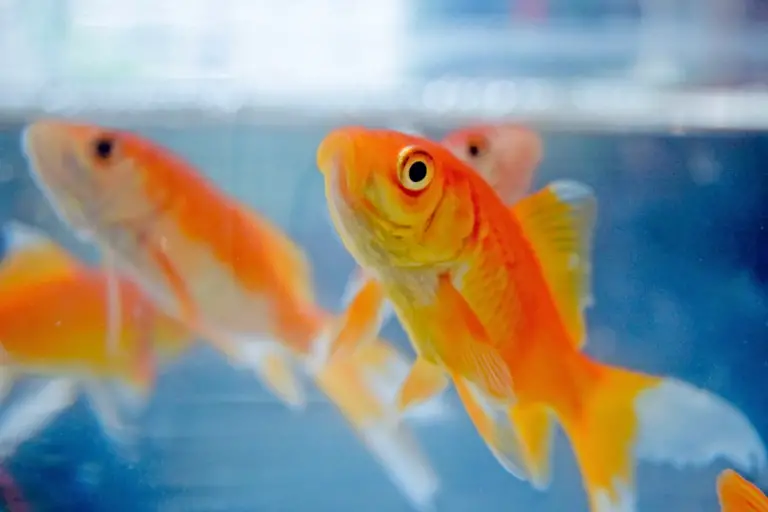Canister Filter Or Sump – The Breakdown
If you’re going to set up an aquarium, whether it’s saltwater or freshwater, you’re going to have to deal with filtration and choosing whether to use a canister filter or sump, and that may seem challenging.
Canister filters are an excellent tool for your aquarium if used correctly. A good filter gives you the option of customizing the filter media to achieve the optimal filtration for your tank. Because water is driven through the media rather than running over or around it, canister filters often require less maintenance than sump systems. Most of these filters also have a spray bar that returns water to the tank. As a result, you can achieve a great amount of surface agitation and water circulation.
This article will discuss the two most popular methods of filtration found in modern aquariums, canister filters vs. sump filters, and the many benefits and drawbacks of each. When it comes to choosing the best long-term solution for your setup, this should assist you in making an informed choice.
The Canister Filter

Aquarium canister filters are huge, strong filtration systems. The canister filter is the most powerful and efficient method of removing contaminants. For the most part, canister filters work from the exterior of the tank. There isn’t much inside the fish tank but the plumbing that brings water in. Large canisters house the various filtration components. So, what’s the point of using a canister filter in the first place? Here are a few reasons why:
Pros of a canister filter
- Versatility – You can use this filter in a wide variety of aquariums due to its adaptability. The canister filter is appropriate for both freshwater and saltwater tanks. You can also use an aquarium canister filter in a turtle tank, which is typically messier than fish tanks.
- Efficiency – Many of these systems have flow rates of hundreds of gallons per hour, which means that even with a big tank, your filter may clean the water several times each hour.
- Particle removal – Canister filters typically use a two-layer mechanical filtration system. In most cases, the larger particles are initially filtered out, and then the tiny particles are filtered in a second layer.
- Ammonia removal – One of the most prevalent causes of death for pet fish is ammonia in the water. Luckily, most canister filter systems include biological filtration media as an additional layer of filtration. To be more exact, bacteria in the media break down ammonia into less toxic nitrogen components.
- Simple to Setup – How simple or difficult it is for you will be determined by the type of canister filter you purchase. However, installing a canister filter isn’t difficult in most cases. If you compare the installation process to other forms of aquarium filters, you’ll see that they’re usually pretty simple.
Cons of a canister filter
- Clutters the tank – In the absence of the proper setup, canister filters stick out like a sore thumb. Before you go out and buy one, consider that.
- Flow control – Without flow control, you run the risk of purchasing a filter that is far too powerful for your tank. Many top of the line canisters do have flow control, But before making a purchase, make sure to confirm this as well.
Sump Filter

An aquarium sump is a separate tank or vessel commonly installed inside the aquarium stand. The sump and aquarium are connected by a pipe, which allows water to circulate both ways. Sumps allow for the concealment of filtering equipment. They also increase the volume of water in the tank, both of which contribute to water stability.
Pros of a sump filter
- Volume – Unlike Canister filters that have a limited capacity. Sumps are limited solely by the size of the pipes and the capability of the pump used.
- Flexibility – A sump is entirely adaptable in terms of the media it accepts. It can be anything from pebbles to beads, pottery, floss, or foam. Sumps also accommodate activated carbon, heaters, and other add-ons depending on the size of the device. The only caution here is to ensure that whatever medium you pick does not significantly limit the flow!
- Efficiency – Because you have control over the medium, you have control over the filter’s efficiency.
- Stock levels – Due to the sump’s capacity, the tanks linked to it can be supplied over standard limits without overstocking.
- Stability – If you have a large tank, maintaining water quality is easy. As a result, in a big water system, the waste produced by fish is more easily diluted. Because of this, it makes sense to expand your system to the maximum extent using a sump system.
Cons of a sump filter
- Leaks – As is the case with all plumbing, it is prone to leaks. The more plumbing you have, the greater the possibility of water escaping.
- Flooding – With more water in the system, a significant leak can release a large amount of water. Additionally, a power outage might result in flooding unless the sump is properly configured. You may also encounter siphoning issues if the entrance is below the water level during normal operation. Thus, it’s worth considering a control valve during planning to avoid this.
- Diseases – If a disease enters the system, it can spread to all tanks connected to it, making treatment extremely expensive. This is why it is critical to maintain ideal water quality and quarantine new fish before introduction. Additionally, it supports the inclusion of UV sterilization in the system.
- Expense – Sumps, in general, can be more expensive than a canister. When adding the cost of the sump itself plus other components that help in making the sump work well. The cost will add up quickly.
Best Setup for using a Canister Filter
A canister filter is an excellent choice for filtering out various pollutants, poisons, and residues from a fish tank. It is a chamber equipped with multiple filter media that purifies the water and returns it to the tank. Canister filters are a no-brainer for most tropical tank settings; they are reasonably priced, simple to install, and frequently far superior to less expensive internal box filters.
Best setup for using a Sump Filter
A sump is simply a container that collects water. Additionally, you can use it alongside trickling filters for various additional applications. Furthermore, sumps have a refugium compartment for filtering away surplus nutrients. Sumps are best utilized when increasing your tank’s water volume is beneficial; when overstocking a tank, keeping big messy fish.
Canister Filter or Sump Conclusion
I hope that summarizes the canister filter versus sump debate. Your desired results and budget will mostly determine the filtration system you choose. Always keep in mind that any investment will be worthwhile in the long run, as choosing the proper setup from the start will ensure the longevity and health of your tank and fish, as well as spare you a lot of misery down the road.
In my opinion, when choosing between a sump or canister filter, a canister filter is an excellent solution for standard fish tanks, provided you don’t mind a little bit of clutter inside your tank. While the sump is ideal for concealing all of your media and accessories, the filter media you choose to use is all additional expense. The canister filter effectively filters the water without requiring additional parts or a time-consuming installation.

